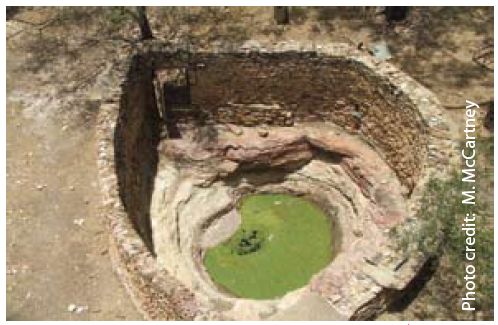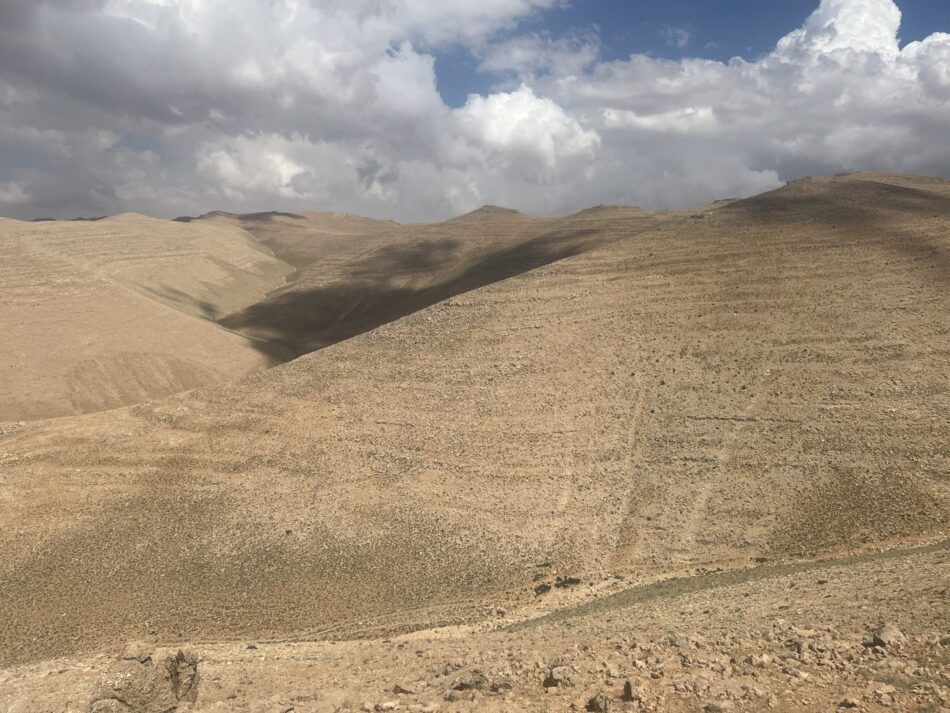Background
 Africa’s rural poor with their limited choices, inadequate access to resources and climate sensitive livelihoods, are at risk from climate variability. Throughout sub-Saharan Africa, existing climate variability, and insufficient capacity to manage that variability, lies behind much of the prevailing poverty and food insecurity. Climate change is predicted to further undermine the livelihoods and well being of millions of people through adverse impacts on crop production, seasonal water resources, disease prevalence, crop pests, and other climate sensitive aspects of rural life.
Africa’s rural poor with their limited choices, inadequate access to resources and climate sensitive livelihoods, are at risk from climate variability. Throughout sub-Saharan Africa, existing climate variability, and insufficient capacity to manage that variability, lies behind much of the prevailing poverty and food insecurity. Climate change is predicted to further undermine the livelihoods and well being of millions of people through adverse impacts on crop production, seasonal water resources, disease prevalence, crop pests, and other climate sensitive aspects of rural life.
 This study focuses on physical water storage in its various different forms. These forms can be conceptualized as a continuum, ranging from water stored in underground aquifers, through the soil profile to that stored in large reservoirs (Figure 2). In any specific situation, each of these types of storage has its own niche in terms of technical feasibility, socioeconomic sustainability, institutional requirements and impact on public health and the environment. By affecting the performance, cost and externalities of different types of water storage, climate change will alter their effectiveness and suitability.
This study focuses on physical water storage in its various different forms. These forms can be conceptualized as a continuum, ranging from water stored in underground aquifers, through the soil profile to that stored in large reservoirs (Figure 2). In any specific situation, each of these types of storage has its own niche in terms of technical feasibility, socioeconomic sustainability, institutional requirements and impact on public health and the environment. By affecting the performance, cost and externalities of different types of water storage, climate change will alter their effectiveness and suitability.
Objectives
- the socio-political, institutional and biophysical conditions under which various storage options should or should not be implemented – when and where are they appropriate?
- which investments in water storage improve resilience and reduce risk for farming communities – how are climate change issues best built into decision making?
The research questions
- How do people cope with current rainfall and water variability?
- How are different types of storage managed in terms of access, institutions and the distribution of benefits?
- How is climate change being factored into plans for water and agricultural development?
- How can the need for water storage and the effectiveness and suitability of different storage options be evaluated and compared for different climate scenarios?
- How can water resource planning and management processes be modified to better account for the uncertainties arising from climate change?
Methods
 The project is a multi-disciplinary study being conducted in Ghana (the Volta Basin) and Ethiopia (the Nile Basin). The project is operating at both the basin scale and on smaller watersheds located within the basins (i.e. the Vea, Golinga and Sata in the Volta and the Koga, Gumera and Guder in the Nile).
The project is a multi-disciplinary study being conducted in Ghana (the Volta Basin) and Ethiopia (the Nile Basin). The project is operating at both the basin scale and on smaller watersheds located within the basins (i.e. the Vea, Golinga and Sata in the Volta and the Koga, Gumera and Guder in the Nile).Project leader
IWMI Researchers
- Dr. V. Smakhtin (v.smakhtin@cgiar.org)
- Dr. S. B. Awulachew (s.bekele@cgiar.org)
- Dr. B. Barry (b.barry@cgiar.org)
- Dr. E. Mapedza (e.mapedza@cgiar.org)
- Dr. Stefanos Xenarios (s.xenarios@cgiar.org)
- Dr. Robyn Johnston (R.Johnston@cgiar.org)
- Mr. G. Forkuor (g.forkuor@cgiar.org)
- Eric Sarpong Owusu (E.S.Owusu@cgiar.org)
Project Duration
Location
and IWMI Sub Regional Office for West Africa (Accra-Ghana).










